Mercedes EQB vs Vauxhall Grandland – Which car suits you better?
Both models have their strengths – but which one suits you more?
Compare performance, efficiency, price and space directly: Mercedes EQB or Vauxhall Grandland?
Powertrain and Performance
The world of electric SUVs has witnessed some remarkable additions, with the Mercedes EQB and Vauxhall Grandland leading the charge. Both vehicles cater to the environmentally-conscious driver with distinct approaches to power and performance.
The Mercedes EQB impresses with its powerful electric engine options, ranging from 190 HP to an exhilarating 292 HP. With an electric range between 445 km and 533 km, it ensures drivers can cover significant distances on a single charge. In contrast, the Vauxhall Grandland presents versatility in its powertrain, offering petrol MHEV, plug-in hybrid, and electric options. The electric variant of the Grandland delivers up to 213 HP and can travel up to 585 km, surpassing the maximum range of the EQB.
Acceleration and Speed
When it comes to acceleration, the Mercedes EQB takes the lead with its high-performance variant accelerating from 0 to 100 km/h in just 6.2 seconds. Meanwhile, the Vauxhall Grandland takes 7.8 seconds to achieve the same feat in its plug-in hybrid version. For those with a need for speed, the Grandland achieves a top speed of 220 km/h compared to the EQB's 160 km/h, making it a solid choice for those prioritizing top speed.
Efficiency and Emissions
As leaders in eco-friendly design, both models subscribe to the zero-emissions ethos; however, the Mercedes EQB, with CO2 emissions firmly at 0 g/km, showcases a commitment to clean driving. The Grandland, while offering a zero-emission electric variant, also includes options with CO2 emissions of up to 124 g/km. Efficiency-minded consumers will find the EQB’s consumption ranging from 15.2 to 17.3 kWh/100 km slightly better in electric consumption compared to Grandland’s 16.9 to 17.7 kWh/100 km.
Interior and Space
Inside these SUVs, thoughtful design and practicality take precedence. The Vauxhall Grandland offers a slightly more spacious trunk capacity of 550 liters, whereas the EQB offers 495 liters. Both models comfortably seat five, ensuring that families and groups can travel in comfort.
While both vehicles offer tremendous interior space, the EQB’s curb weight ranges from 2105 kg to 2170 kg, suggesting a more robust construction compared to the Grandland’s leaner 1600 kg to 2132 kg, which may play into factors of durability and handling dynamics.
Dimensions and Payload
The Mercedes EQB and Vauxhall Grandland mirror each other closely in dimensions, with the EQB standing slightly taller at 1689 mm compared to the Grandland’s 1665 mm. However, the Grandland boasts a wider structure at 1934 mm over the EQB's 1834 mm width, potentially influencing interior spaciousness and stability. On the payload front, the Grandland shines with a heavier capacity up to 580 kg, compared to the EQB's 435 kg.
Conclusion
Choosing between the Mercedes EQB and Vauxhall Grandland ultimately depends on the priorities of the driver. For those desiring stylish design and power, the EQB offers alluring performance metrics and luxury. Alternatively, the Grandland provides versatility with its array of powertrains and slightly greater interior space. Each SUV stands tall in its own right, marking significant strides toward a more sustainable driving future.
Here’s where it gets real: The technical differences in detail
Costs and Efficiency: Price and efficiency are key factors when choosing a car – and this is often where the real differences emerge.
Vauxhall Grandland has a decisively advantage in terms of price – it starts at 32600 £, while the Mercedes EQB costs 45900 £. That’s a price difference of around 13307 £.
In terms of energy consumption, the advantage goes to the Mercedes EQB: with 15.20 kWh per 100 km, it’s slightly more efficient than the Vauxhall Grandland with 16.90 kWh. That’s a difference of about 1.70 kWh.
As for range, the Mercedes EQB performs minimal better – achieving up to 535 km, about 12 km more than the Vauxhall Grandland.
Engine and Performance: Under the bonnet, it becomes clear which model is tuned for sportiness and which one takes the lead when you hit the accelerator.
When it comes to engine power, the Vauxhall Grandland has a a bit edge – offering 325 HP compared to 292 HP. That’s roughly 33 HP more horsepower.
In acceleration from 0 to 100 km/h, the Vauxhall Grandland is slight quicker – completing the sprint in 6.10 s, while the Mercedes EQB takes 6.20 s. That’s about 0.10 s faster.
In terms of top speed, the Vauxhall Grandland performs distinct better – reaching 220 km/h, while the Mercedes EQB tops out at 160 km/h. The difference is around 60 km/h.
There’s also a difference in torque: the Mercedes EQB pulls slight stronger with 520 Nm compared to 509 Nm. That’s about 11 Nm difference.
Space and Everyday Use: Beyond pure performance, interior space and usability matter most in daily life. This is where you see which car is more practical and versatile.
Both vehicles offer seating for 5 people.
In curb weight, the Vauxhall Grandland is noticeable lighter – 1675 kg compared to 2105 kg. The difference is around 430 kg.
In terms of boot space, the Vauxhall Grandland offers minimal more room – 550 L compared to 495 L. That’s a difference of about 55 L.
In maximum load capacity, the Mercedes EQB performs slight better – up to 1710 L, which is about 65 L more than the Vauxhall Grandland.
When it comes to payload, Vauxhall Grandland evident takes the win – 568 kg compared to 435 kg. That’s a difference of about 133 kg.
All in all, the Vauxhall Grandland shows itself to be leaves the rival little chance and secures the title of DriveDuel Champion.
It impresses with the more balanced overall package and proves to be the more versatile companion for everyday use.
Mercedes EQB
The Mercedes-Benz EQB is an all-electric compact SUV that seamlessly blends practicality with modern luxury. Its sleek design and spacious interior make it an attractive option for families seeking both style and function. With advanced technology and impressive range capabilities, the EQB is a testament to Mercedes-Benz's commitment to sustainable mobility.
details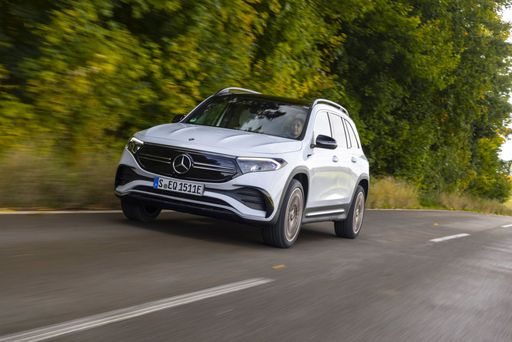 @ group-media.mercedes-benz.com
@ group-media.mercedes-benz.com
 @ group-media.mercedes-benz.com
@ group-media.mercedes-benz.com
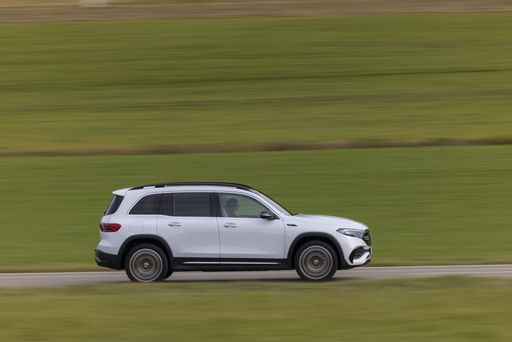 @ group-media.mercedes-benz.com
@ group-media.mercedes-benz.com
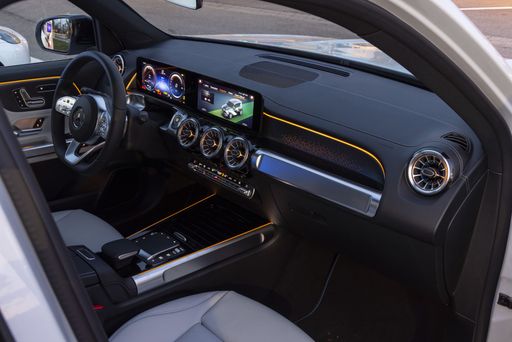 @ group-media.mercedes-benz.com
@ group-media.mercedes-benz.com
 @ group-media.mercedes-benz.com
@ group-media.mercedes-benz.com
Vauxhall Grandland
The Opel Grandland offers a blend of style and practicality, making it an appealing choice for those seeking a versatile SUV. Its sleek design is complemented by a comfortable and spacious interior, providing an enjoyable driving experience for both short commutes and long journeys. Advanced technology and safety features enhance the overall appeal, ensuring drivers feel confident and connected on the road.
details @ media.stellantis.com
@ media.stellantis.com
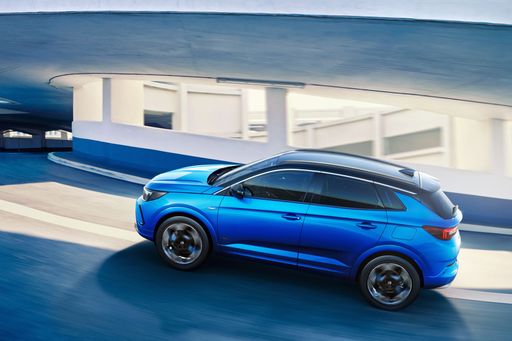 @ media.stellantis.com
@ media.stellantis.com
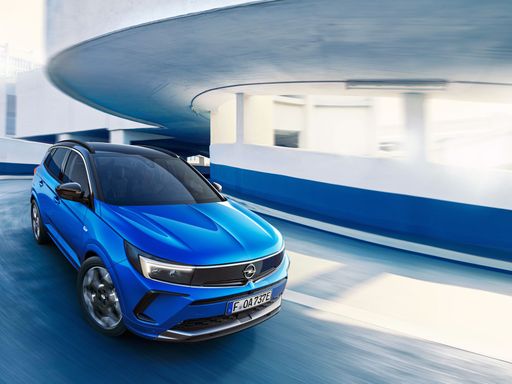 @ media.stellantis.com
@ media.stellantis.com
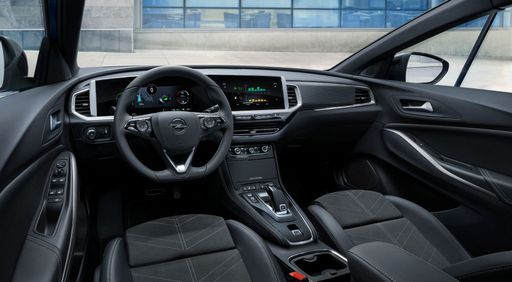 @ media.stellantis.com
@ media.stellantis.com

|

|
|
|
|
Costs and Consumption |
|
|---|---|
|
Price
45900 - 58900 £
|
Price
32600 - 51400 £
|
|
Consumption L/100km
-
|
Consumption L/100km
2.6 - 5.6 L
|
|
Consumption kWh/100km
15.2 - 17.2 kWh
|
Consumption kWh/100km
16.9 - 18 kWh
|
|
Electric Range
468 - 535 km
|
Electric Range
82 - 523 km
|
|
Battery Capacity
70.50 kWh
|
Battery Capacity
-
|
|
co2
0 g/km
|
co2
0 - 126 g/km
|
|
Fuel tank capacity
-
|
Fuel tank capacity
55 L
|
Dimensions and Body |
|
|---|---|
|
Body Type
SUV
|
Body Type
SUV
|
|
Seats
5
|
Seats
5
|
|
Doors
5
|
Doors
5
|
|
Curb weight
2105 - 2170 kg
|
Curb weight
1675 - 2325 kg
|
|
Trunk capacity
495 L
|
Trunk capacity
485 - 550 L
|
|
Length
4684 mm
|
Length
4650 mm
|
|
Width
1834 mm
|
Width
1905 - 1934 mm
|
|
Height
1654 - 1689 mm
|
Height
1665 mm
|
|
Max trunk capacity
1710 L
|
Max trunk capacity
1580 - 1645 L
|
|
Payload
435 kg
|
Payload
425 - 568 kg
|
Engine and Performance |
|
|---|---|
|
Engine Type
Electric
|
Engine Type
Electric, Petrol MHEV, Plugin Hybrid
|
|
Transmission
Automatic
|
Transmission
Automatic
|
|
Transmission Detail
Reduction Gearbox
|
Transmission Detail
Dual-Clutch Automatic, Reduction Gearbox
|
|
Drive Type
Front-Wheel Drive, All-Wheel Drive
|
Drive Type
Front-Wheel Drive, All-Wheel Drive
|
|
Power HP
190 - 292 HP
|
Power HP
145 - 325 HP
|
|
Acceleration 0-100km/h
6.2 - 8.9 s
|
Acceleration 0-100km/h
6.1 - 10.2 s
|
|
Max Speed
160 km/h
|
Max Speed
170 - 220 km/h
|
|
Torque
385 - 520 Nm
|
Torque
230 - 509 Nm
|
|
Number of Cylinders
-
|
Number of Cylinders
3 - 4
|
|
Power kW
140 - 215 kW
|
Power kW
107 - 239 kW
|
|
Engine capacity
-
|
Engine capacity
1199 - 1598 cm3
|
General |
|
|---|---|
|
Model Year
2024 - 2025
|
Model Year
2024 - 2025
|
|
CO2 Efficiency Class
A
|
CO2 Efficiency Class
A, D, B
|
|
Brand
Mercedes-Benz
|
Brand
Vauxhall
|
What drive types are available for the Mercedes EQB?
The Mercedes EQB is available as Front-Wheel Drive or All-Wheel Drive.
The prices and data displayed are estimates based on German list prices and may vary by country. This information is not legally binding.
